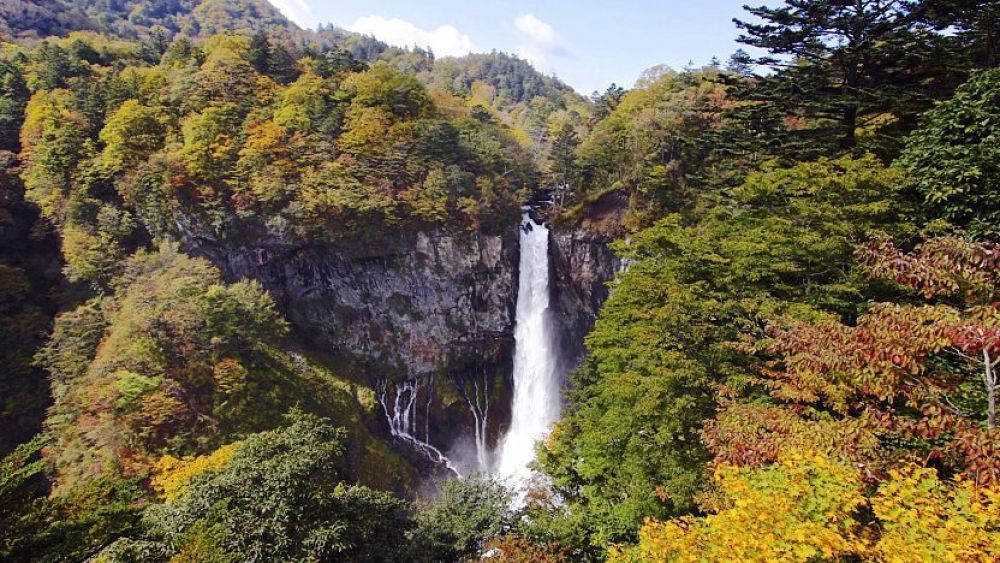

Kegon Falls, located in Nikko National Park in Tochigi Prefecture, Japan, has been a captivating destination for both domestic and international travelers for centuries. Standing at 97 meters, Kegon Falls is known for being one of Japan's most beautiful and celebrated waterfalls, and it is especially famous for its scenic beauty in the autumn when the surrounding foliage turns a brilliant array of red, orange, and yellow hues.
The history of tourism at Kegon Falls traces back to the Edo period (1603–1868), when the area around Nikko, including the Toshogu Shrine, became a place of pilgrimage. It was during this period that people began to appreciate the natural beauty of Kegon Falls, although the region was not as accessible as it is today.
In 1872, with the introduction of the railway system in Japan, travel became more convenient, and Nikko's popularity as a tourist destination grew rapidly. The establishment of Nikko National Park in 1934 further cemented Kegon Falls' status as a must-visit spot for nature lovers and sightseers.
Following World War II, Japan experienced a significant boom in domestic tourism. Kegon Falls continued to be a cherished landmark and also began to draw more international visitors. With the construction of the elevator in 1930, which offered direct access to a viewing platform at the base of the falls, Kegon Falls became an attraction accessible to a wider audience, including those not able or willing to hike the steep surrounding terrain.
In recent years, Kegon Falls has seen a shift towards sustainable tourism practices, with efforts to preserve the natural environment while still allowing visitors to experience the grandeur of the waterfall. Ecotourism initiatives are in place to minimize human impact and to educate visitors on the ecological significance of the area.
Seasonal Attractions: Tourism at Kegon Falls now heavily revolves around the changing seasons. While autumn is still the peak season due to the extraordinary fall colors, winter has also become increasingly popular for the stunning view of the falls when they are partially frozen. Spring brings the fresh green of new leaves, and summer provides a cool respite from the city heat.
Increased Accessibility: To manage the growing influx of tourists and provide a more comfortable experience, facilities around Kegon Falls have improved over the years. There are now multilingual signs and guides, well-maintained walking paths, and viewing platforms designed to accommodate large numbers of visitors without compromising the view.
Integration with Local Culture: Another trend is the integration of the waterfall visit with a broader cultural experience. Tourists are encouraged to take in the historical context of Nikko as a whole, including the World Heritage sites like Toshogu and Rinno-ji Temples, making a trip to Kegon Falls part of a journey through Japan's rich cultural tapestry.
In conclusion, the history of tourism at Kegon Falls is one that has evolved alongside Japan’s wider historical shifts. From being an isolated beauty revered by pilgrims and nature enthusiasts to becoming a well-established stop for international visitors, Kegon Falls continues to enchant travelers with its perennial beauty and cultural significance. With sustainable tourism strategies in place, it is poised to remain a beloved destination for generations to come.